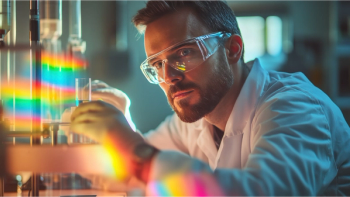
Spectroscopy and Space Exploration: Mars – The Red Planet
Spectroscopy magazine is pleased to welcome you to the “Mars” landing page, one of three landing pages in our “Spectroscopy and Space Exploration” content series.
Spectroscopy magazine is pleased to welcome you to the “Mars – The Red Planet” landing page, one of three landing pages in our “Spectroscopy and Space Exploration” content series.
This landing page houses several articles that focus on the great work of spectroscopists that used spectroscopic techniques to facilitate technological and scientific advancements for exploring Mars and the Martian soil. Spectroscopic topics that are covered in these articles include laser-induced breakdown spectroscopy (LIBS) and Raman spectroscopy.
Unlocking Mars' Secrets: Spectroscopic Study of Terrestrial Analogues Sheds Light on Rover Missions – An Analytica Chimica Acta Review
By: Jerome Workman, Jr.
This review article explores the significance of analyzing terrestrial analogues to enhance spectroscopic capabilities for Mars exploration. The review highlights key findings and lessons learned from studying terrestrial analogues, providing valuable insights for the development of spectroscopic systems in current and future missions to Mars.
Click here to read this article:
Mars Rover Uses Spectroscopy to Detect Diverse Organic-Mineral Associations in Jezero Crater
By: Jerome Workman, Jr.
A Nature study reports the discovery of diverse organic-mineral associations in the Máaz and Séítah formations within Jezero crater on Mars, as observed by the Perseverance rover's SHERLOC instrument. The Raman and fluorescence findings indicate the presence of aromatic organic molecules within Martian soils.
Click here to read this article:
Life on Mars? Raman Spectroscopy Tests Stability of Biomolecules at Surface Conditions
By: Patrick Lavery
Author Jean-Pierre P. de Vera talks to Spectroscopy magazine about his study in which seven biomolecules were exposed to a simulated Martian environment outside the International Space Station (ISS) for a period of approximately 15 months.
Click to read more about this study:
Analyzing Geological Targets Using Laser-Induced Sparks on Mars
By: Spectroscopy Staff
In a recent study, researchers analyzed the correlation between laser-induced breakdown spectroscopy (LIBS) and acoustic signals captured by the microphone (MIC) on NASA's Perseverance rover during its mission on Mars.
Click here to read this article:
Advancements in LIBS Technology Enable Sensitive Nitrogen Detection for Mars Exploration
By: Spectroscopy Staff
Researchers have developed an advanced method using laser-induced breakdown spectroscopy (LIBS) for sensitive and accurate detection of nitrogen in simulated Martian soil.
Click here to read this article:
To continue your exploration of our “Spectroscopy and Space Exploration” content series, you can visit the other landing pages by clicking on the landing page you want to access below:
Newsletter
Get essential updates on the latest spectroscopy technologies, regulatory standards, and best practices—subscribe today to Spectroscopy.





